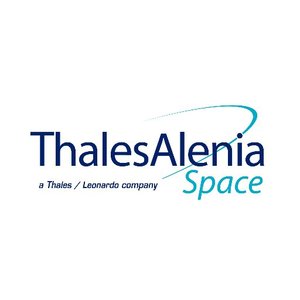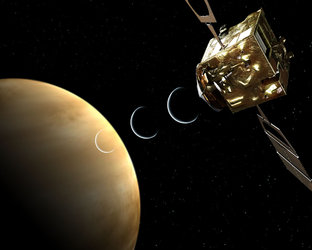Delivering multibeam antennas on a budget
A new type of multibeam antenna has been patented by ESA and European industry, offering high-throughput performance at a lower price tag for future telecom or Earth-observing missions.
Employing multiple radio beams lets individual antennas receive or transmit multiple signals simultaneously, whether for telecommunications or radar-style scanning.
“Normally, multiple beam forming is achieved using phased array antennas,” explains ESA antenna engineer Nelson Fonseca. “However, these require extremely complex and costly electronic back ends to make them work.
“Instead, we make use of a ‘parallel plate waveguide’ atop a standard antenna to form and focus the separate beams in a quasi-optical manner.

“The carefully shaped but simply produced structure of this aluminium plate causes delays in the signal path to shape the wavefront as desired.
“The Ku-band testing we’ve performed so far show these waveguides can deliver robust radio-frequency performance compliant with a range of applications for a comparatively low cost.
“They could be a serious contender for future megaconstellations adding up to thousands of satellites, where unit cost will really be a big driver.”

The parallel plate waveguides were devised and tested through a pair of projects supported by ESA’s Basic Technology Research Programme – the basic ideas factory of the Agency – with Thales Alenia Space in France.
The novel technology was then jointly patented by ESA and its partner company and has been reported in specialist technical journals.
Relatively simple in structure and tolerant of engineering imperfections, the waveguides can be designed to deliver the required performance. This robust design opens up the possibility to use novel low-cost manufacturing technologies.

The design process has been simplified further through the creation of automated design software, produced for ESA’s Antenna section by a PhD student, Francois Doucet of Rennes 1 University, France: “this now enables efficient optimisation process starting from given requirements.”
Francois’s work has been supported through ESA’s Networking/Partnering Initiative, which supports work carried out by universities and research institutes on advanced technologies with potential space applications, with the aim of fostering increased interaction between ESA, European universities, research institutes and industry.
Nelson adds: “The resulting beams possess linear polarisation, but can be transformed into circular polarisation by incorporating a polariser into the waveguide or combining it with a polarising reflector.”
Thales Alenia Space sees a lot of potential in this innovation, explains company study manager, Hervé Legay: “Having completed the research phases for this antenna concept, our next step internally is to see how best to fit it within given applications, with self-funded studies addressing telecommunications, radar and megaconstellation uses.”















 Germany
Germany
 Austria
Austria
 Belgium
Belgium
 Denmark
Denmark
 Spain
Spain
 Estonia
Estonia
 Finland
Finland
 France
France
 Greece
Greece
 Hungary
Hungary
 Ireland
Ireland
 Italy
Italy
 Luxembourg
Luxembourg
 Norway
Norway
 The Netherlands
The Netherlands
 Poland
Poland
 Portugal
Portugal
 Czechia
Czechia
 Romania
Romania
 United Kingdom
United Kingdom
 Slovenia
Slovenia
 Sweden
Sweden
 Switzerland
Switzerland





























